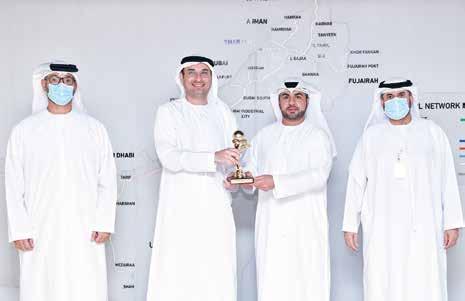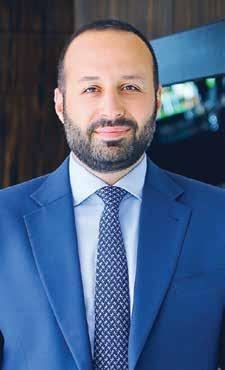
3 minute read
Sustainability
Middle East organizations can leverage smart technology services for socially distanced offices PwC: 76% of Middle East CFOs implement workplace safety measures, especially with technology
Contactless printing, remote servicing, de-centralized printer fleets, and large display projectors in meeting rooms can enable organizations to adhere to government guidelines, says Jason McMillan, Sales Director, Epson Middle East – Editor.
As Middle East organizations move from their mobile devices instead of going toward a ‘New Normal’ with a mix of to a printer to scan or copy documents. remote work and offices re-opening, smart technology services, especially Remote servicing and Heat-Free in printing, can enable the socially technology reduces repair visits distanced workplace. One of the biggest concerns for bosses
Among Chief Financial Officers in the across the Middle East is having unexpected Middle East, a recent PwC survey shows people visit their offices, potentially that 76% of them are implementing presenting health risks. In case printers workplace safety measures, including 85% need repairs, what used to be based on onof respondents in the UAE. More than site visits can now largely be done remotely. half (54%) of Middle East organizations Channel partners can use software such are driving automation and new ways of to reduce on-site repair visits, increase firstworking, the survey adds. fix success, and costs in servicing printers
Middle East offices that adopt these and business downtime. simple but effective office solutions, Middle East organizations are starting to particularly when it comes to printing, can show strong interest in Epson’s Heat-Free reduce touch-points, help make employees technology, which can deliver productivity more efficient, reduce servicing, and and print quality equal to that of laser optimize overall printing costs. printers, but without the preheating Contactless printing technology technology allows inkjet printers to reduce reduces touch-points users’ TCO (Total Cost of Ownership) In offices, often employees gathered around and environmental impact as they require printers to wait for their documents to be infrequent servicing and generate less printed out. Many organizations adopted waste. contactless printing solutions to control and fusing of toner to paper. This core paper and ink wastage, as printing is only Larger offices de-centralize completed when an employee swipes their printing, scan and email documents card to release their print job. With the Middle East home to many
Now that same contactless printing conglomerates and regional headquarters, technology can help to control the these larger enterprises can similarly adopt gathering of people at printers, and also safety measures such as de-centralizing reduce the number of touch-points as printing fleets. Rather than having one large people swipe cards, not needing to touch printer that everyone uses, companies are the screen or buttons on the printer while opting to place smaller printers around the also avoiding touching other people’s office to reduce the gathering of people. documents. Many offices can also scan and email
Cloud-based solutions, can allow documents as PDFs rather than handing employees to remotely print documents them out – further reducing the number of
Jason McMillan, Sales Director, Epson Middle East.
touch-points and continuing to foster the socially-distanced office.
Projectors and document cameras make space for social distancing
As Middle East workers return to offices, business leaders are leveraging projectors and document cameras to safely bring people back together and maintain social distancing while still able to see material being presented in meetings.
Projectors offer a more flexible, inclusive, collaborative, and memorable solution than flat panel screens. For example, projectors leave no visible finger marks, and screen sizes can scale up to 350 inches.
Employees working remotely can also annotate, share ideas, and add to group work. Document cameras can also share projected live views of 3D objects without people crowding or passing objects.
Investing in technology now leads to a safer, more innovative future
Futurists are predicting different forms of the return to work, from socially distanced desks to social distanced circles on floors. Middle East organizations that adopt innovative printing technology now can enable the socially distanced office to meet government guidelines and to maintain business continuity. n







